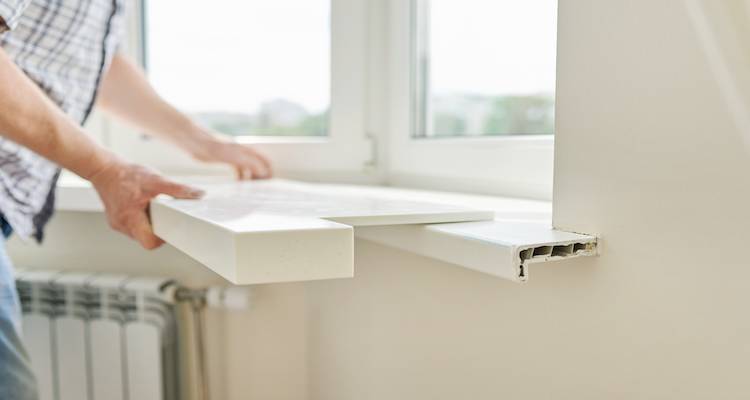Secondary Glazing Cost
- The average cost of secondary glazing installation is around £3,000.
- The job will usually take between 1 to 2 days to complete.
- A closer look at secondary glazing costs and what impacts these.
- How long installing secondary glazing takes, as well as a general overview of the process.
- How to find and hire a local window specialist.
Looking to find out how much secondary glazing costs?
This guide explains everything you need to know about secondary glazing installation, including typical prices and costs for different sized homes.
Ready to get a quote for secondary glazing?
Get free, no obligation quotes from window fitters near you. It is fast, easy, and connects you with professionals in your area.
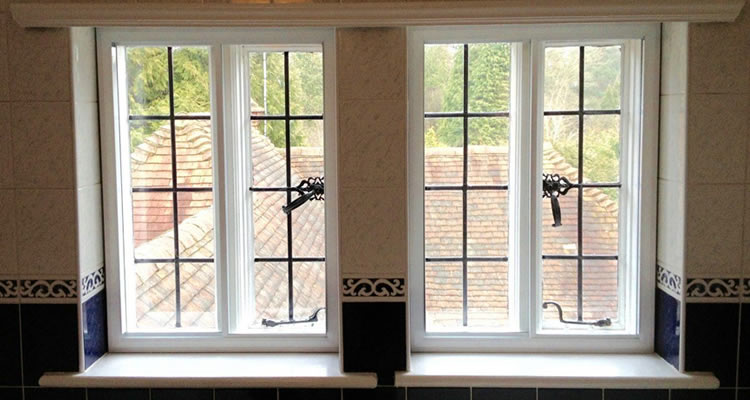
£3,000
Table of Contents
- How Much is Secondary Glazing?
- How Much is Secondary Glazing Installation?
- How Long Does Secondary Glazing Installation Take?
- Factors That Impact Secondary Glazing Costs
- What is Secondary Glazing?
- What's Involved in Installing Secondary Glazing?
- Can I Install Secondary Glazing Myself?
- Secondary Glazing Windows Costs by Type
- Secondary Glazing Alternatives
- Building Regulations for Secondary Glazing
- Benefits of Secondary Glazing
- Secondary Glazing Removal Cost
- Checklist: Hiring a Secondary Glazing Installer
- FAQs
How Much is Secondary Glazing?
For the average UK homeowner, secondary glazing costs around £3,000 to install in 2025.
However, secondary glazing prices vary depending on the number of windows you want to apply secondary glazing to and your location in the UK. The average cost of secondary glazing per window is usually between £275 to £400 per window.
Secondary glazing is easier to fit than double glazing and is a more reasonable project that DIY enthusiasts could take on.
However, most people will find it still makes more sense to hire a local tradesperson to come and professionally fit the secondary glazing for them, so they can be confident that it has been done right.
To get the best efficiency from secondary glazing, should it be installed as near to the existing windows as possible?
Secondary glazing involves installing an extra set of glazing on the inside of an existing window. It can be a permanent addition, or can be installed just as a temporary measure.
Secondary glazing is often installed for the same reasons as double glazing — to offer better insulation and soundproofing. However, secondary glazing costs significantly less than double glazing.
It can also be your best option if you're living in a listed property and aren't permitted to replace your windows.
For listed buildings or conservation areas, the slim aluminium frames used for secondary glazing are unobtrusive and almost invisible from the outside, retaining the external character of your property. This means you won't need to get planning permission from your local authority, as they categorise secondary glazing as a removable item.
Secondary Glazing Prices
| Job Description | Material Costs | Labour Costs | Total Estimated Costs |
|---|---|---|---|
| Fitting of secondary glazing to 4 windows | £1,100 – £1,650 | £250 – £300 | £1,350 - £1,950 |
| Fitting of secondary glazing to a small terraced house up to 8 windows | £2,350 – £2,850 | £400 – £475 | £2,750 - £3,325 |
| Fitting of secondary glazing to semi-detached house up to 10 windows | £3,000 – £3,500 | £700 – £775 | £3,700 - £4,200 |
| Fitting of secondary glazing to detached house up to 15 windows | £4,600 – £5,250 | £875 – £1,100 | £5,475 - £6,150 |
Secondary Glazing Cost Per Window
| Number of Windows | Estimated Cost Per Window |
|---|---|
| 4 Windows | £275 - £412 |
| 8 Windows | £293 - £356 |
| 10 Windows | £300 - £350 |
| 15 Windows | £306 - £350 |
How Much is Secondary Glazing Installation?
Now, let's take a look at labour costs and timescales.
On average, professional window contractors will charge around £130 to £200 per day for labour. A secondary glazing installation often requires two contactors, so you can expect the labour costs to be around £260 to £375 per day of work.
How Long Does Secondary Glazing Installation Take?
The timeframe to install secondary glazing will vary depending on the size of your home and the number of windows that you want the secondary glazing to be fitted to.
Here's what you need to know:
| Job Description | Duration |
|---|---|
| Fitting of secondary glazing to 4 windows | 0.5 – 1 day |
| Fitting of secondary glazing to a small terraced house up to 8 windows | 1 – 2 days |
| Fitting of secondary glazing to semi-detached house up to 10 windows | 1.5 – 2.5 days |
| Fitting of secondary glazing to detached house up to 15 windows | 3 – 4 days |
Fitting secondary glazing to 4 windows can usually be completed within a day, whereas the fitting of secondary glazing on a detached home of around 15 windows usually takes around 3 to 4 days.
The cost for labour also varies due to the number of windows and the time it takes to fit them. Fitting of secondary glazing to 4 windows usually costs around £250 to £300 in total for the labour, however, the labour costs for a detached home of around 15 windows costs around £875 to £1,100 on average.
Factors That Impact Secondary Glazing Costs
The cost of secondary glazing can vary depending on the type of system you choose, the size and style of your windows, and the condition of the existing frames. Below is a breakdown of the main factors that will affect the total price of your project.
Number of Windows
The number of windows that need to have secondary glazing installed can greatly affect the overall cost of the job.
On average, the cost to install secondary glazing on 4 windows is around £1,350 to £1,950, whereas the cost to install secondary glazing on 15 windows is an average of £5,475 to £6,150 for the total cost of the job. As you can see, the number of windows plays a huge part in the price that you should expect to pay for secondary glazing.
Type of Secondary Glazing
The style you choose has one of the biggest influences on cost. Simple fixed panels tend to be the most affordable, while sliding, hinged or lift-out units usually cost more due to the additional hardware and labour involved.
Window Size and Shape
Larger windows require more materials and take longer to fit, increasing the overall price. Unusual shapes, bays, and period-style windows may also need custom-made panels, which raises both manufacturing and labour costs.
Frame Material and Finish
The frame used to hold the secondary glazing can impact the price. Aluminium and timber frames cost more than basic uPVC or lightweight options but typically offer better durability, insulation and aesthetics. Coloured, powder-coated or wood-effect finishes may also add to the cost.
Accessibility and Installation Complexity
Windows that are easy to access are quicker to work on and therefore cheaper. Upper-storey installations, tight internal spaces, deep reveals or awkward frame layouts take longer and may require additional fixings or equipment, increasing the installation cost.
Location in the UK
Your location in the UK can also affect the cost that you are going to pay. Labour costs in London are around £30 to £60 more per day, so the labour costs can add up for those living in and around London.
Existing Window Issues
If your current windows or frames are not in good condition, the installer may need to carry out extra work before fitting the secondary glazing. This can include:
- Repairing damaged frames – rot, warping or loose components must be fixed so the new glazing sits securely and seals correctly.
- Dealing with draughts or poor sealing – gaps may need filling, and worn seals replaced before the secondary glazing can be installed.
- Smoothing or levelling uneven surfaces – rough or uneven reveals may require sanding or preparation to ensure a proper fit.
- Removing old secondary glazing or fittings – dismantling outdated panels, film kits or previous DIY installations can add time and cost.
These issues are common in older properties, and although they increase the total cost, they ensure the new glazing performs properly and lasts longer.
Optional Extras
Additional features such as toughened glass, acoustic-rated units, safety locks, ventilation panels or bespoke trims can increase the price further. These upgrades are worth considering if you live on a busy road, in a noisy area, or want improved energy efficiency.
By understanding these factors, you can get a clearer idea of what your project is likely to cost and what to expect when comparing quotes from different installers.
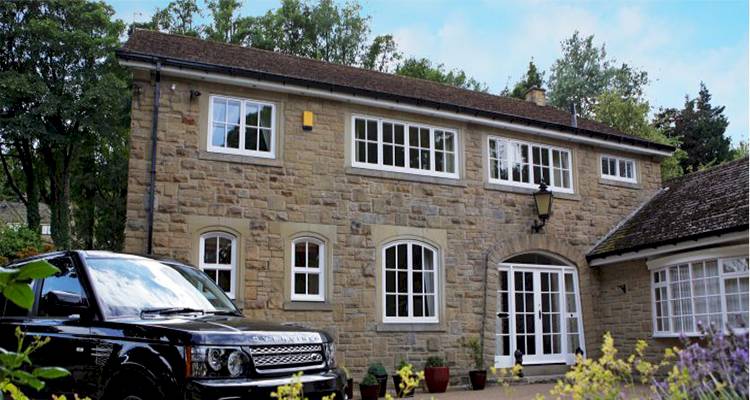
We moved into our flat in November last year, and noticed the double glazing seals might have popped. How much does it cost to repair broken double-glazing seals?
What is Secondary Glazing?
Secondary glazing involves the fitting of a thin and discreet internal window that exists in addition to your current window type. It acts as a cost-effective and very efficient way to soundproof and insulate your windows.
There is usually a slight gap between your existing window and the new secondary glazing. This gap traps air and diffuses sound waves in order to provide the insulation and soundproofing that you require.
Secondary glazing is much cheaper than having new windows installed since nothing needs to be removed in order to fit them.
What's Involved in Installing Secondary Glazing?
Secondary glazing is simpler to fit than full replacement windows, and while confident DIYers can install basic magnetic or clip-in panels themselves, a full installation is best left to the professionals.
Below is an overview of what is involved in fitting secondary glazing, so you can see what the process looks like. If you would rather skip the hassle and be sure everything is installed correctly first time, you can post your job and get quotes from experienced window specialists in your area.
Before the Job Starts
- Precise window survey. A professional installer first visits your property to check each window — measuring width, height, frame depth, and reveal depth. They also assess wall/wall-frame conditions to choose the best fixing method (e.g. face-fix, reveal-fix or track-based, depending on your windows’ construction).
- Order or manufacture bespoke units if required. If standard sizes don’t match, custom secondary glazing units are ordered to fit your windows exactly. This ensures a proper fit for both thermal and acoustic performance.
During the Job
- Protect your home and clear the area. Installers typically lay protective sheets over floors or furniture and clear a working area around each window before starting work, to minimise dust and protect surfaces.
- Mount the secondary glazing frame or track system. The installer positions the frame using pre-drilled fixing points if supplied, levels and centres it, then drills and screws or clips it securely into the existing window reveal or internal frame, depending on the fixing method chosen.
- Fit glazing panels and seals. Once the frame is secure, glazing panels (glass, acrylic or polycarbonate) are inserted, and gaskets, sealant or weather-proof strips are applied to ensure an airtight and draught-free seal. Any trimming, packing or adjustment needed to get a flush fit is taken care of so panels sit perfectly aligned and sealed.
After the Job
- Function & seal checks. Installers test each window unit to ensure it operates smoothly (if operable), locks or seals correctly, and sits evenly. They inspect for any gaps, misalignment or flaws that could undermine insulation, soundproofing or security.
- Clean-up and hand-over. Once complete, the work area is tidied up: old materials or packaging removed, dust cleaned, and glazing cleaned so your windows are ready to use. Installers may also offer care or maintenance advice.
When done professionally, secondary glazing installation is a streamlined, efficient process, often completed in just a few hours per window. It delivers a reliable, high-quality finish that maximises thermal insulation, draught-proofing and noise reduction.
Ready to get started?
Get free, no obligation quotes from window fitters near you. It's fast, easy, and connects you with professionals in your area.
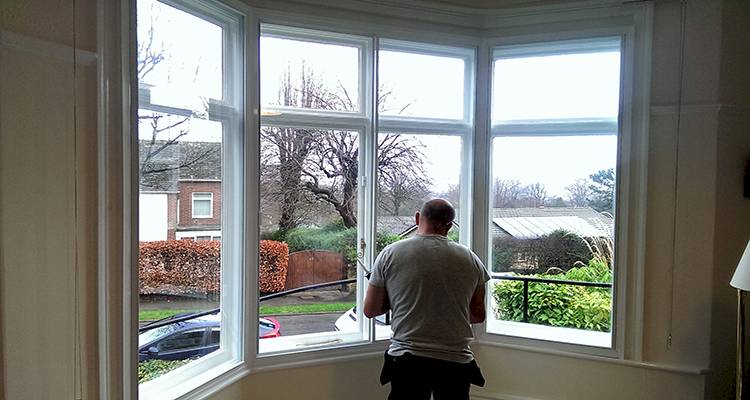
Can I Install Secondary Glazing Myself?
For many straightforward windows, secondary glazing can indeed be a viable DIY project, particularly if you opt for simple magnetic or clip-in panels, and you’re confident with measuring and basic DIY tools.
That said, accuracy and attention to detail are vital. Small measurement errors or misaligned panels can lead to gaps, which may compromise heat retention, soundproofing, and draught control, or even risk damaging the existing window frame. More advanced systems (e.g. sliding, hinged or framed units) bring extra complexity and are much harder to install correctly without experience.
DIY kits can be a cost-effective, flexible solution, but they often compromise on long-term performance, durability, or guarantee coverage when compared with professionally installed systems. For reliably efficient insulation, proper sealing and a neat finish, many homeowners find it safer and more practical to hire a skilled installer who has experience selecting the right glazing system, making precise measurements and ensuring proper sealing and alignment first time around.
Secondary Glazing Windows Costs by Type
Let's take a look at the cost of different types of secondary glazing:
| Type of Secondary Glazing | Estimated Cost Per Window |
|---|---|
| Lift-Out Secondary Glazing | £180 - £250 |
| Horizontal Slider Unit | £200 - £300 |
| Vertical Slider Unit | £220 - £325 |
| Hinged Glazing Unit | £275 - £400 |
Now, let's look at the main pros and cons of each of those types:
Lift-Out Secondary Glazing Costs
Lift-out secondary glazing panels are ones that are removable and allow for occasional access. They come in a number of different shapes, sizes, and thicknesses, so you can get exactly what you need to suit your windows.
This type of glazing also allows for access so that you can clean the inside of your windows as needed.
The average cost per window for lift-out secondary glazing is between £180 and £250.
Pros
- ✔ Lifts out for access, allowing you to remove for cleaning
- ✔ Supports large or irregularly-shaped windows
- ✔ Comes in different shapes and styles
Cons
- ✖ Less secure than other secondary glazing types
- ✖ Can be awkward to use over long periods of time
- ✖ Needs to be taken out entirely to allow for access
Horizontal Slider Unit Costs
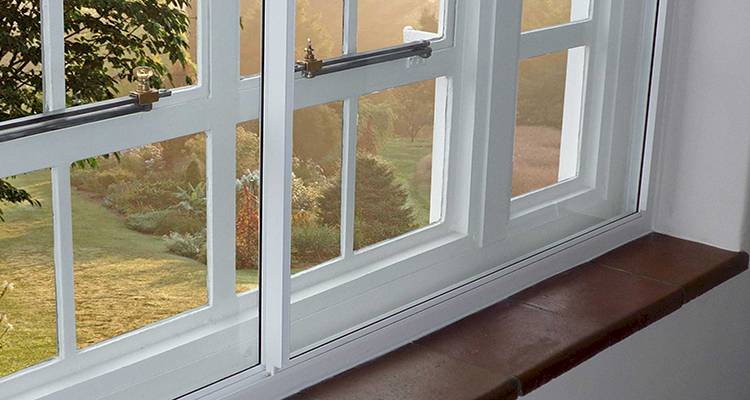
Slider units come in a number of different sizes and styles and usually have between 2 and 5 panels, depending on the size of the window in which it is being installed.
They're available in a range of shapes and styles to suit your aesthetic, as well as a good range of colour options.
The average cost per window for horizontal slider units is between £200 and £300.
Pros
- ✔ Can be opened without needing to remove anything
- ✔ Comes in different shapes, styles, and colours
- ✔ Versatile, and can accommodate small and large windows
Cons
- ✖ Difficult to install
- ✖ Not very thermally efficient
- ✖ Can be quite obvious with visible frame lines
Vertical Slider Unit Costs
Vertical slider units come in a number of different sizes and styles and are designed specifically to be used on sash windows.
They can also come in a variety of colours to suit your specific taste and match your window and room.
The average cost per window for vertical slider units is between £220 and £325.
Pros
- ✔ Comes in different shapes, styles, and sizes
- ✔ Various options for sound and heat insulation
- ✔ Great for use in sash windows
Cons
- ✖ Difficult to install
- ✖ More expensive than horizontal sliders
- ✖ Can be tricky to clean
Hinged Glazing Unit Costs
Hinged glazing has the benefit of having a variety of different hinges, and these allow different types of access, so you can choose the type of hinge that best suits your specific needs.
This type of glazing unit can be used as a fire escape due to the various opening options. It also improves security with multi-point locking.
The average cost per window for hinged glazing units is between £275 and £400.
Pros
- ✔ Gives full window access
- ✔ Can be used as a fire escape
- ✔ Improves security and soundproofing
Cons
- ✖ Usually has a bulky frame
- ✖ Difficult to install
- ✖ More expensive to install than other secondary glazing options
Secondary Glazing Alternatives
There are some alternatives to secondary glazing available.
Below is a list of the alternatives to secondary glazing that you may wish to consider:
Double Glazing Costs
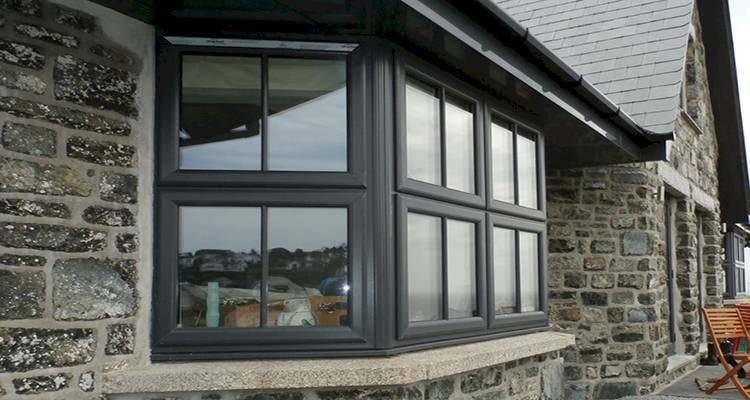
Double glazing windows contain sealed units that are created using two pieces of glass. The gap between the two panes of glass provides good insulation for the home against the cold weather outside.
Typically, double glazing costs between £120 and £350 per window.
Pros
- ✔ Good insulation, helping to prevent condensation
- ✔ Can lower energy bills, and increase property value
- ✔ Better soundproofing, durability, and security
Cons
- ✖ More expensive than secondary glazing
- ✖ Can’t be repaired
Triple Glazing Costs
Triple glazing windows contain sealed units that are created using three pieces of glass. The gap between the three panes of glass provides good insulation for the home against the cold weather outside.
On average, triple glazing costs around £330 to £550 per window.
Pros
- ✔ Excellent insulation, preventing almost all chances of condensation
- ✔ Can lower energy bills, and increase property value
- ✔ Better durability, security, and soundproofing
Cons
- ✖ More expensive than secondary glazing and double glazing
- ✖ Can’t be repaired
- ✖ Bulky, and the extra weight can put a strain on hinges and joints
Building Regulations for Secondary Glazing
Listed buildings and properties in conservation areas are often subject to extra controls, so you should always check with your local council before making any changes to windows in homes of this type.
Secondary glazing is usually installed on the inside of the existing window, and the slim frames are designed to be as unobtrusive as possible so they do not alter the external appearance of the building. This can make it easier to gain approval in sensitive or historic properties, but it does not automatically remove the need for Listed Building Consent.
Any work to a listed building is tightly regulated, and your local planning authority will normally want to approve the exact design and method of installation. Always confirm what is allowed in writing before you order or fit secondary glazing in a listed or protected property.
In most standard (unlisted) homes, internal secondary glazing does not usually need planning permission and is not treated as controlled building work in the same way as replacing external windows. However, the installation should still meet relevant standards for safety and energy efficiency, so it is sensible to use a competent installer who understands current regulations.
Benefits of Secondary Glazing
There are a number of great benefits to installing secondary glazing in your home. Below is a list of some of the main advantages of secondary glazing:
Reduces Energy Costs
Secondary glazing offers better insulation and so can result in lower energy costs. It is also cheaper to install than double or triple glazing, so it can be a much cheaper alternative than getting replacement windows put into your home.
Provides Insulation
Secondary glazing provides a great amount of insulation, which will help to keep your home a lot warmer, even in winter months. This extra insulation can also result in lower energy costs overall.
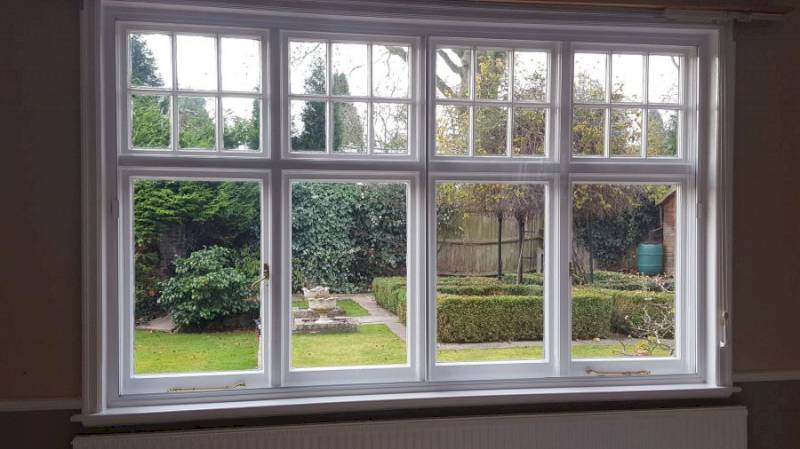
Reduces Noise
The extra layer added to your window can result in a lot less noise coming through from the outside. This can be especially beneficial if you live somewhere where there is a lot of noise, such as a city or on a busy road.
Added Security
The extra layer on your window also provides an added layer of security. Instead of just having a stand-alone window, you also have a second layer of protection on the home for your own peace of mind.
Secondary Glazing Removal Cost
If you want to make any alterations to your existing windows or if you would like to paint the frames, then you may need to remove your secondary glazing temporarily. Removing them is quite a straightforward job. However, you may prefer to have a professional come in to remove them to avoid damaging them in any way.
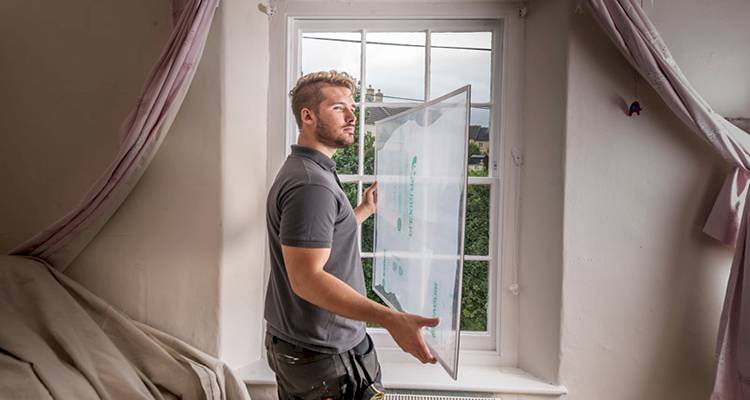
If you would like to hire a contractor to come to your home to remove secondary glazing, they will usually charge around £120 to £230 per day for the cost of labour.
Checklist: Hiring a Secondary Glazing Installer
There are a number of things that you may need to consider when it comes to hiring someone to install secondary glazing. Below is a list of all of the things that you should think about before making a decision on the right person to take on the job:
- Be sure to get the quote in writing so that you know exactly what you can expect to pay once the secondary glazing job is complete.
- Always obtain at least 3 separate quotes for the job so that you can ensure you’re getting a good price.
- Ask for a breakdown of costs on the quotes so that you can be certain that you’re getting a good price for each element of the job.
- For any payments you make, always get a receipt.
- Ask around for recommendations on good contractors in your local area.
- Find out what materials the contractor will be using for their work – you don’t want to skimp out on quality to save a bit of money upfront. This may result in you having to spend more on repairs in the future.
- Find out how much experience the contractor has in installing secondary glazing.





